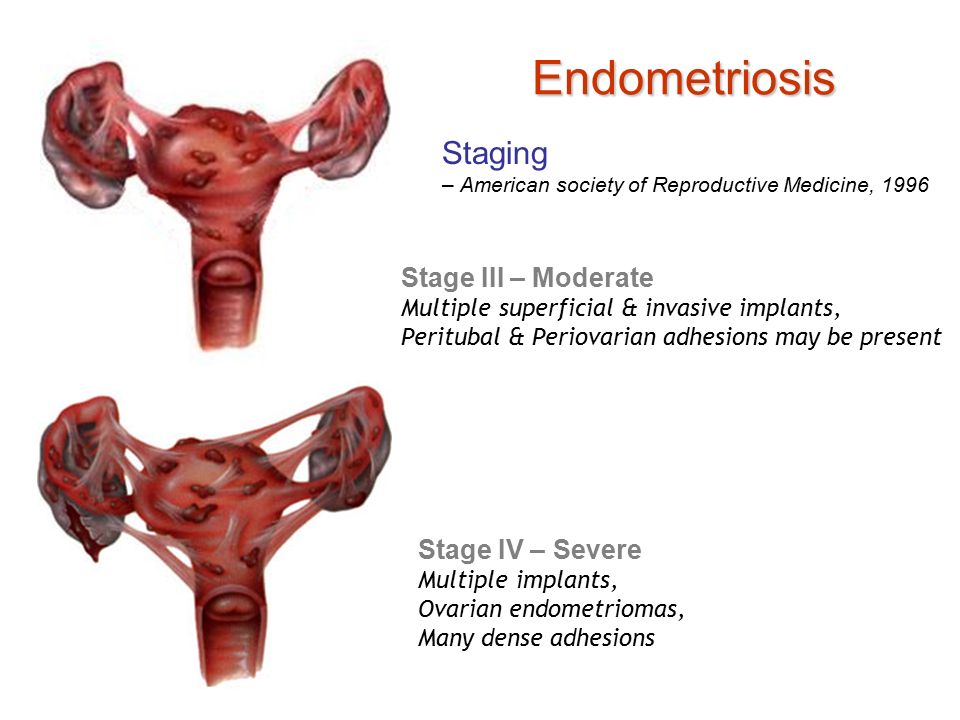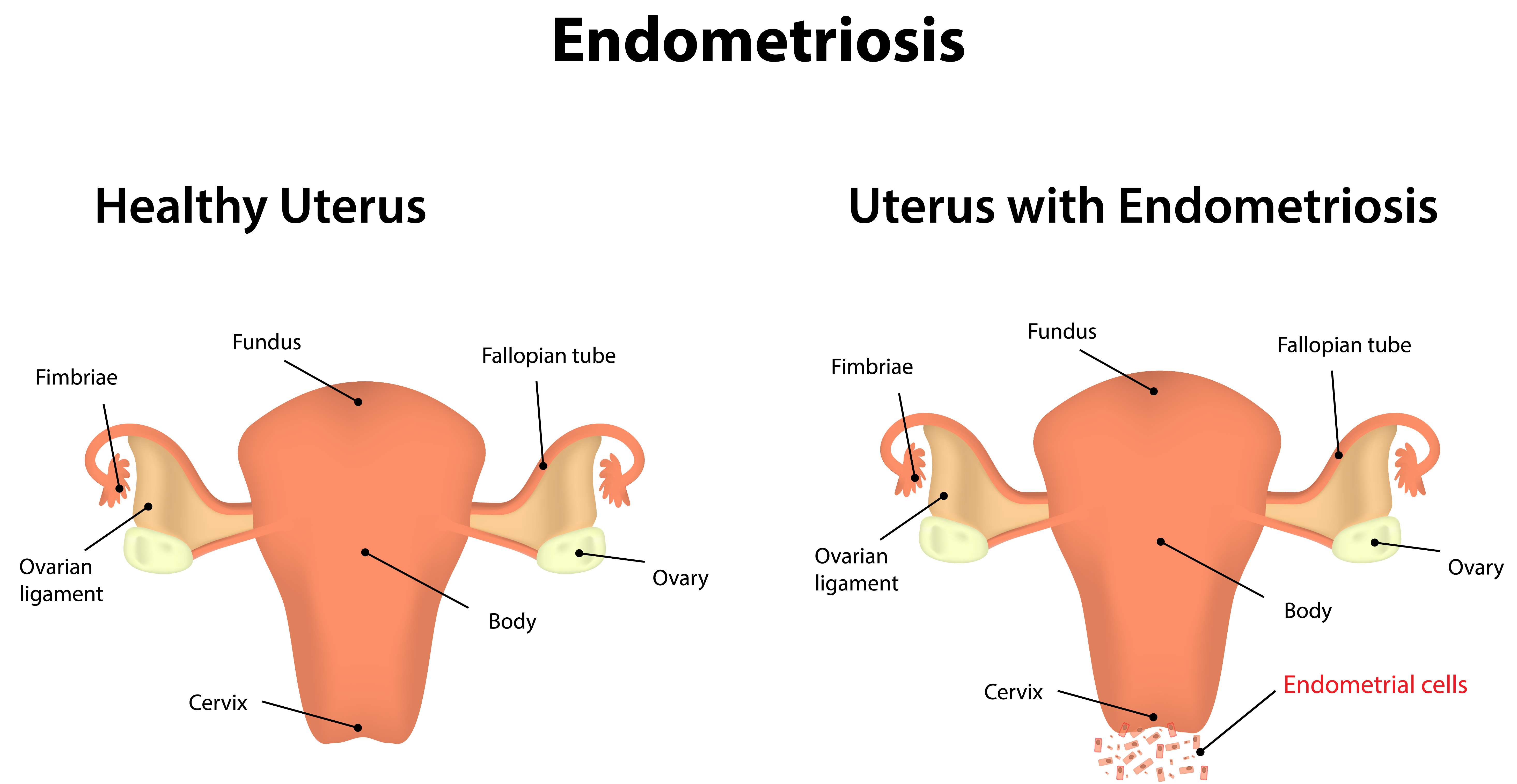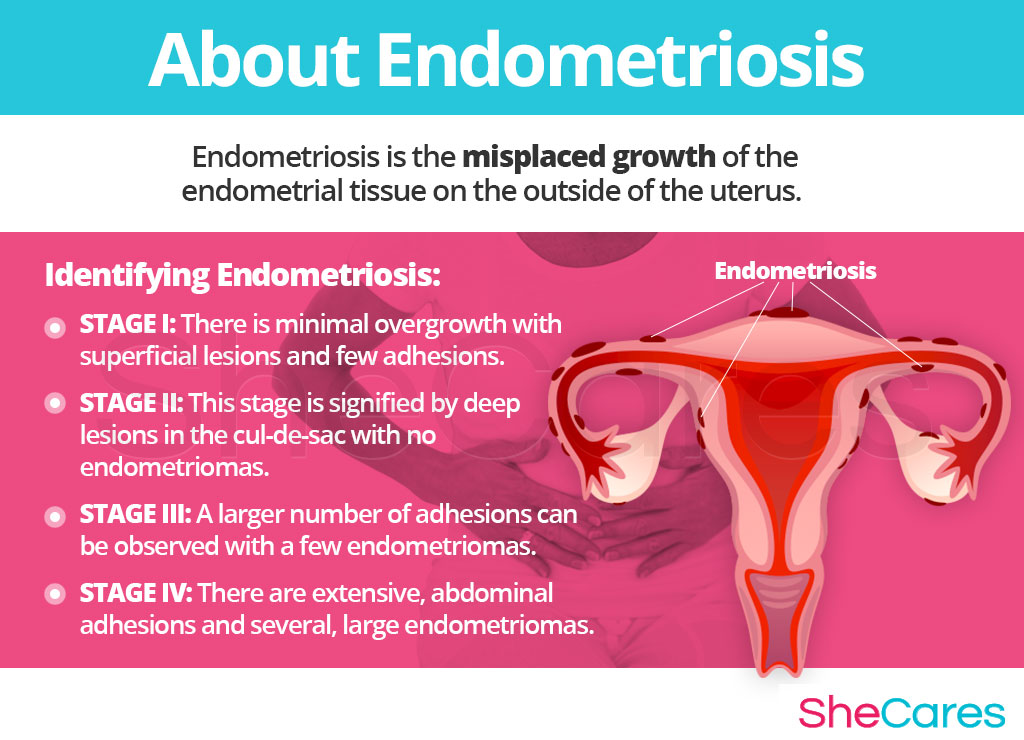Endometriosis Brown Spotting - What It Means For You
Feeling a bit puzzled by some unexpected changes in your body? It's really quite common for folks to experience all sorts of things when it comes to their cycles, and sometimes, that includes a little spotting. We're talking about those times when you notice some light bleeding when you're not actually having your usual period. It can be a little unsettling, you know, and it often brings up questions about what's going on inside.
Most of us are pretty familiar with the typical menstrual cycle, which, for many, goes on for about 28 days, with the period itself lasting maybe five days or so. But then there's spotting, which is just a small bit of bleeding that shows up between those regular flows. While it happens to lots of people, it's also something that's thought of as a bit out of the ordinary, so you might want to have a chat with someone who knows about these things, just to be sure.
When we talk about conditions like endometriosis, spotting, especially a kind that shows up as brown, can actually be a really common sign. This happens because the tissue that's growing outside where it should be, like the lining inside your womb, also breaks down and bleeds. So, it's almost like your body is trying to tell you something, and understanding what that brown spotting might mean for someone with endometriosis can be a helpful step in figuring things out.
- Cardi B Older Sister
- Parishilton London
- Nle Choppa And Jayla
- Katie Holmes Pregnancy
- The Rookie Season 7 Episode News
Table of Contents
- What is Spotting and Why Does It Happen?
- The Connection Between Endometriosis and Brown Spotting
- Why Is the Spotting Brown with Endometriosis?
- Other Reasons for Spotting Beyond Endometriosis Brown Spotting
- How Does Endometriosis Affect Your Cycle Beyond Brown Spotting?
- When to Pay Attention to Endometriosis Brown Spotting
- Common Signs That Might Come with Endometriosis Brown Spotting
- Understanding the Broader Picture of Endometriosis
What is Spotting and Why Does It Happen?
Most people are used to their period coming around every month, usually for a few days, as part of a cycle that lasts roughly 28 days. But sometimes, you might notice a little bit of blood when you're not expecting your period at all. This is what we call spotting, or sometimes, it's referred to as bleeding that happens between your regular monthly flows. It's just a small amount, you know, not like a full period, and it can actually be quite light.
Now, while spotting is something that a lot of people experience at some point, it's also considered a bit out of the usual. So, if you're seeing it, it's often a good idea to bring it up with a healthcare provider, just to talk it through. It could be nothing serious, but it could also be a hint that something else is going on, and that's really what we want to figure out. Sometimes, it's just your body doing its thing, but other times, it might be a signal.
When we talk about the color of this spotting, it can show up in a few different shades. It might be a bright red, a soft pink, or even a brownish color. The color can actually tell us a little bit about how fresh the blood is, or how long it's been around. For instance, blood that's been exposed to air for a little while often turns a darker shade, which is something to keep in mind.
- Caitlin Clark Leaving For European League
- William And Zoey Klein
- Vance Booed At Kennedy
- Raye Levine Spielberg
- Ncis Origins Return Date
The Connection Between Endometriosis and Brown Spotting
One common reason people experience spotting, and especially that brownish kind, is a condition called endometriosis. This happens because the kind of tissue that normally lines the inside of your womb, which is supposed to break down and bleed during your period, starts to grow outside of it. So, you might find this tissue in other places, like on your ovaries or other parts of your belly, and that's actually quite interesting.
When this misplaced tissue, which is kind of like the lining of your womb, begins to shed, it can cause bleeding. And because it's not where it's supposed to be, or because the bleeding might be a little slower to leave the body, it can sometimes show up as brown spotting. This is just one of the ways endometriosis can make itself known, and it's a pretty typical symptom for many people who have it. It's a bit like a hidden period happening where it shouldn't.
The blood from these little patches of tissue, which are often called implants or lesions, reacts to your body's monthly hormone shifts. So, just like the lining inside your womb, these patches also try to shed blood every month when your period is due. This shedding outside the womb can lead to various signs, including that light bleeding or brown spotting, which can actually be a pretty consistent experience for some. It's a complex system, to be sure.
Why Is the Spotting Brown with Endometriosis?
When you see brown discharge, it's often a sign that the blood has been around for a little while and has had a chance to mix with air, causing it to change color. This process is called oxidation, and it's basically what happens when blood gets a bit older before it leaves your body. So, if you're experiencing endometriosis brown spotting, this is usually the reason for its color, which is something many people wonder about.
A lot of the time, that brown discharge is simply old blood making its way out of the body, sometimes mixed with a little bit of mucus. It's not necessarily a sign of anything immediately serious, but it does tell you that the blood isn't fresh, bright red blood. For people with endometriosis, where tissue is bleeding in places it shouldn't be, this older blood can take a bit longer to exit, leading to that brownish tint. It's a pretty common occurrence, actually.
Since spotting between periods is quite common for those with endometriosis, the appearance of brown discharge can definitely be linked back to this condition. It's one of those things that, if it keeps happening, might point you toward looking into endometriosis as a possible explanation. The color can range from a very light pink to a dark brown, and it usually appears as small spots rather than a heavy flow, which is important to distinguish.
Other Reasons for Spotting Beyond Endometriosis Brown Spotting
While we're talking about endometriosis and brown spotting, it's also worth remembering that spotting before your regular period starts could be a sign of other things going on in your body. It's not always endometriosis, you know. Sometimes, there might be other underlying issues or conditions that are causing this light bleeding, and it's good to be aware of them, too.
For example, things like uterine fibroids, which are growths in the womb, or polyps, which are smaller growths, can also lead to spotting. Hormonal issues, where your body's chemical messengers are a bit out of balance, can also play a part. So, if you're seeing spotting, it's really important not to jump to conclusions, as there are several possibilities that could be at play, and that's why talking to a doctor is so helpful.
It's true that spotting is a common symptom of endometriosis, but it's just one piece of the puzzle. The color and how it feels can vary a lot, from pink to red to brown, and it might be thin or a little lumpy. This variety means that while endometriosis can cause it, other things can too, so it's a bit like detective work to figure out the real cause. People with more advanced stages of endometriosis might even have issues with their ovaries, which can also contribute to these sorts of symptoms, apparently.
How Does Endometriosis Affect Your Cycle Beyond Brown Spotting?
Endometriosis is a medical condition that can really change how a person's menstrual cycle behaves. It's not just about the occasional brown spotting; it can also lead to other things, like passing frequent large blood clots during your period, which is definitely something that stands out. This condition is quite common, affecting about one in ten women and individuals assigned female at birth, usually during their reproductive years, which is a pretty significant number.
People who live with endometriosis often find that they have unusually heavy bleeding when they're on their period. Or, they might experience bleeding that's just not normal at other times during their cycle. This isn't just a little bit more blood; it can be quite a lot, and it's a key sign that something might be different about their cycle. So, while brown spotting is one aspect, the overall bleeding pattern can be quite different too, you know.
Beyond the bleeding, endometriosis can also bring on other conditions, like ovarian cysts. These are fluid-filled sacs that can form on the ovaries and can add to the discomfort or other symptoms a person experiences. So, it's not just about the tissue growing in the wrong places; it's about how that growth can affect other parts of your reproductive system, too, and that's something to be aware of.
When to Pay Attention to Endometriosis Brown Spotting?
If you find yourself often seeing spotting between your periods, it's really worth paying attention to. This is especially true if that spotting appears as brown or a dark reddish discharge. It can show up at different times: before your period even starts, while you're on your period, or even after it's finished. One study, for instance, showed that a very high percentage of women with endometriosis, like 89 percent, reported this kind of spotting, which is quite telling.
The key thing to remember is that spotting is usually much lighter than a regular period. It might just be a few small spots, and as we've talked about, the color can go from a light pink all the way to a very dark brown. If this is a regular occurrence for you, and especially if it's that brown kind of spotting, it's a good idea to consider what it might mean in the context of endometriosis. It's your body giving you a clue, in a way.
Discharge changes can actually include a whole range of things, beyond just spotting. You might notice pink, brown, or even black discharge, or perhaps a heavier flow than you're used to. Sometimes, there are also signs of an infection, like discharge that's yellow or green, or has a bad smell, or even has a lumpy feel. So, while brown spotting is one sign, it's part of a broader picture of what your discharge might be telling you.
Common Signs That Might Come with Endometriosis Brown Spotting
Many of the signs that come with endometriosis can actually feel a lot like severe period symptoms, just ramped up. So, if you're experiencing brown spotting, it's worth considering if you're also feeling other things that seem a bit more intense than what you'd expect from a typical period. These other signs can really help paint a clearer picture of what might be going on, you know.
One of the commonly talked about signs that goes along with endometriosis is pain during or after sex. This kind of discomfort can be quite significant for some people. It's another one of those symptoms that, when combined with things like brown spotting, can point towards endometriosis as a possibility. It's not always easy to talk about, but it's an important piece of information to share with a healthcare provider.
Interestingly, a very high percentage of women diagnosed with endometriosis, over 80% in fact, describe their main symptom as abdominal bloating. This isn't just a little bit of puffiness; it can be quite pronounced. They might also experience things like periodic bloating and changes in their digestion. So, while brown spotting is a visual sign, these internal feelings of discomfort and swelling are also very common companions, which is something to really consider.
Understanding the Broader Picture of Endometriosis
Endometriosis is a widespread condition, actually, and it's very common in the field of women's health. It affects about 10% of women and individuals assigned female at birth, typically starting in their younger adult years. This means a lot of people are dealing with this condition, and it's not something that's rare or unusual, which is important for everyone to know, I mean, it really is.
When this condition is present, the cells that are similar to the lining of the womb start to grow outside of it, forming little clumps of tissue. These clumps are what cause a lot of the issues. So, it's not just about the brown spotting; it's about these growths that are reacting to your monthly cycle in places they shouldn't be, and that's why it can cause so many different kinds of discomfort and changes.
People with endometriosis frequently experience bleeding that's not normal, either during their regular period or at other times in their cycle. This can range from that light brown spotting we've been talking about, to heavier flows, or even those larger blood clots. It's a condition that truly impacts how a person experiences their monthly cycle, making it often more challenging than it needs to be, basically.
So, to sum things up, we've gone over what spotting is, how it often appears as brown, and why that might be a sign of endometriosis. We've also touched on other reasons for spotting, how endometriosis can affect your cycle beyond just the brown discharge, and other common signs that might come along with it. We also covered the broader context of endometriosis as a common condition that affects many people.
- Lucy And Stephen Dating
- Elizabeth Olsen Sexy
- Tracy Letts Playwright
- Midheaven Virgo
- William And Zoey Klein

Endometriosis - International Women's Clinic

What Is Endometriosis?

Endometriosis - Hormonal Imbalance Symptoms | SheCares